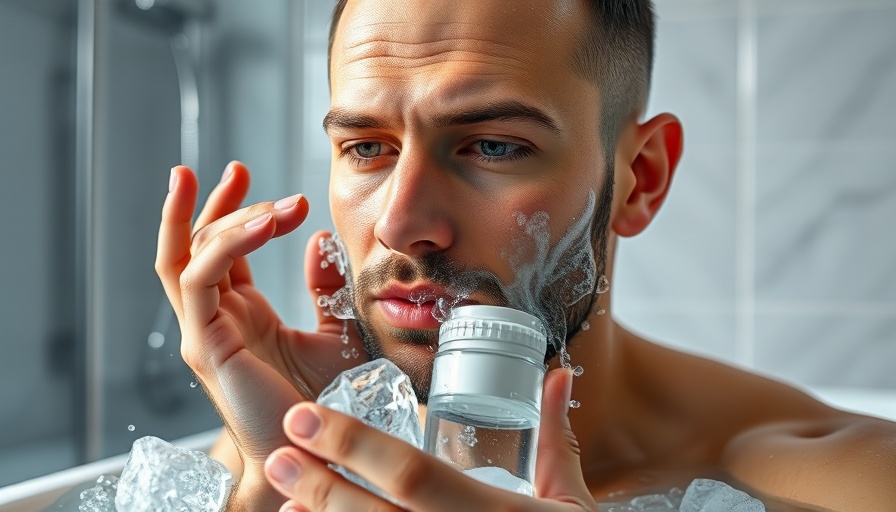
Rethinking Viral Skincare Routines
As trends in skincare continue to swirl through social media, it’s important to take a step back and assess the information we consume. The recent viral skincare routine from fitness influencer Ashton Hall has elicited a wave of commentary and skepticism, with many left questioning whether they should adopt his unique habits of dunking his face in ice water and rubbing banana peels on their skin. Insights from dermatologists suggest that while Hall's rituals are entertaining, they are not necessarily beneficial for skin health.
Understanding the Claims: Is Banana Peel Good for Skin?
Hall’s use of banana peeling might sound novel, but this advice has wandered through forums and social media for ages. Experts like Dr. Hannah Kopelman emphasize that while banana peels do contain antioxidants like vitamin C and potassium, the concentrations are so minuscule that any impact on skin is likely to be negligible. Essentially, it’s safe but ineffective—a reminder that just because something is trendy doesn’t mean it’s good for you.
Alternatives That Work: Proven Skincare Products
Instead of relying on questionable hacks, consider integrating clinically-backed skincare products into your routine. For instance, using gentle exfoliants can better tackle issues such as acne, hyperpigmentation, or aging. Dermatologists laud the efficacy of moisturizers containing ingredients like hyaluronic acid, which hydrates and plumps the skin more effectively than any makeshift remedy. Experts acknowledge that while skincare can certainly be fun, informed choices are paramount for achieving and maintaining healthy skin on the road.
Ice Water and Its Effects: Fact or Fiction?
Moving on to another of Hall’s habits—dunking his face in ice water. While cold water is often touted for its ability to reduce puffiness and invigorate the skin, experts urge caution. A brief splash might be refreshing, but prolonged exposure offers little in the realm of substantial skin benefits. Instead, you might consider a good facial mist or cooling gel, specially formulated for skin rejuvenation that provides lasting hydration and soothing benefits.
Practical Tips for Travelers: Skincare on the Go
Digital nomads often find themselves in various environments that can affect their skin. Whether it's the humidity of Bali or the dryness of the desert, proper skincare is essential. Keep a travel-friendly routine, featuring travel-size essentials like cleanser, moisturizer, and sunscreen. Invest in portable skincare tools, and don't underestimate the power of drinking plenty of water to keep skin hydrated from within. By prioritizing effective skincare products and routines over social media fads, you can maintain a radiant complexion, regardless of where you are.
Wrapping It Up: Your Skincare Journey
As the world continues to evolve and new trends emerge, keeping your skincare routine simple and backed by science will ultimately yield the best results. Always consult professionals rather than relying on viral trends, especially when it involves your health. Prioritize your skin's well-being and engage in practices that combine both fun and efficacy.
 Add Row
Add Row  Add
Add 




Write A Comment